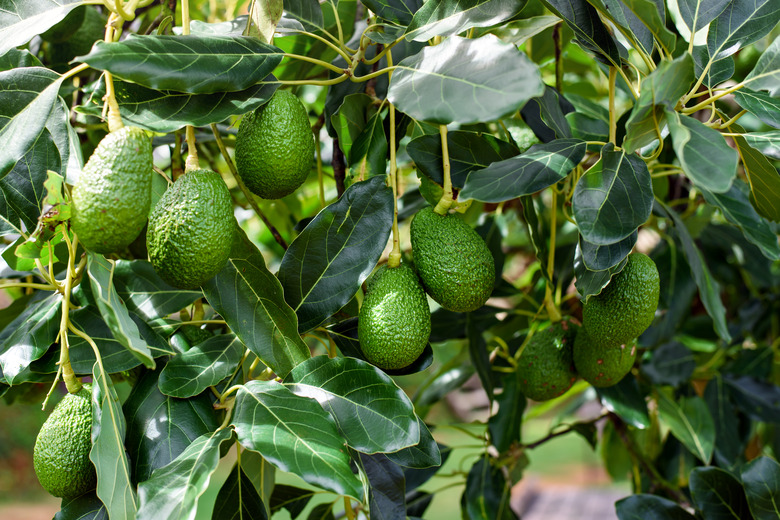Life Cycle Of The Avocado Tree
We may receive a commission on purchases made from links.
An avocado (Persea americana) tree isn't just an attractive plant, but it can actually produce delicious fruits for your kitchen too. Understanding the life cycle of the avocado tree can help you to better grow your own tree and ensure that it thrives. It's also important to note that if you're starting an avocado tree from seed, it may not bear fruit for 10 to 15 years, and even then the fruits likely will not resemble the avocado from which you harvested the seed.
While avocado seeds can be germinated indoors, they must be transplanted into your garden once they're properly established. Avocado trees can only grow outdoors year-round in warm U.S. Department of Agriculture plant hardiness zones 10 through 12, though you can move your potted plant indoors during colder weather if you live outside these zones. Outdoor avocado trees can grow much larger and therefore produce bigger and (generally) better-quality fruits.
Germination of Avocado Seeds
Germination of Avocado Seeds
The beginning of an avocado tree is the seed found in the middle of the fruit. You can start your own avocado tree at home using a seed. Evenly space three toothpicks around the widest part of the seed and then use the picks to suspend the seed in a glass or jar of water. Make sure the more rounded end of the seed is in the water and leave the water glass in a warm, well-lit area.
Keep the water topped up as it evaporates to ensure the bottom half of the seed remains fully immersed and change the water if it starts to look dirty. After around six weeks, you should see a root forming from the base of your seed and a sprout growing out of the top. When the stem reaches over 6 inches long, trim it back to around 3 inches. When the stem reaches 6 inches for the second time and the roots are thicker, you can then transfer your avocado tree seedling into potting soil.
Flowering and Fruits
Flowering and Fruits
Your budding avocado tree should be kept in a warm, sunny spot in your home. Keep the soil moist but ensure the pot has drainage holes to prevent the roots from becoming waterlogged. Keep trimming back your tree when it reaches around a foot in height to stimulate new sprouts. Keep looking after your plant; it may take years for it to begin to flower and bear fruit.
When your plant gets to flowering age (between 10 and 15 years), you should move it outside in the spring. The cooler nighttime temperatures are essential at this stage. If you are planting your tree outdoors, this is the time in its lifespan to do so.
Avocado flowers are "complete," meaning they have both functional male and female organs in one flower. They open and close over a two-day period, once as functionally female and once as functionally male. This means self-pollination is possible in an avocado tree. Most of these flowers will drop away from the tree, but any pollinated flowers are what can produce avocado fruits. Once your avocado tree begins producing fruit, it will continue to do so, usually starting in April.
Grafted Avocado Trees
Grafted Avocado Trees
A far more efficient way to grow an avocado tree is by purchasing a grafted avocado tree from a nursery. These trees are grafted onto a rootstock, meaning they're hardier and can produce fruit more quickly, usually in three to five years. Specialized grafting can also allow one avocado tree to bear several different varieties of avocado fruit at the same time.
Life Span of Avocado Trees
Life Span of Avocado Trees
Avocado trees can live for a very long time, but typically, the oldest ones are those growing naturally in their ideal climate. According to the Old Farmer's Almanac, the oldest living avocado tree known was planted in 1879 at the Berkeley campus of the University of California. Although you may not be able to replicate this longevity with your own tree, you can prolong its life by caring for it properly.
